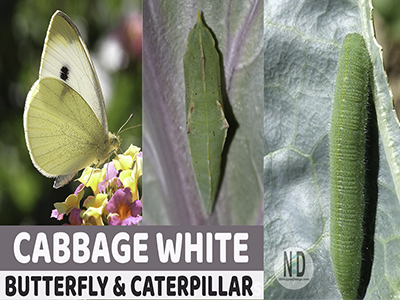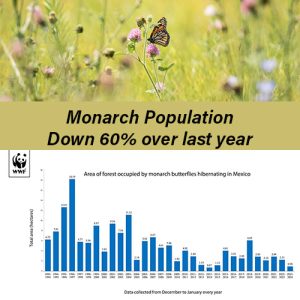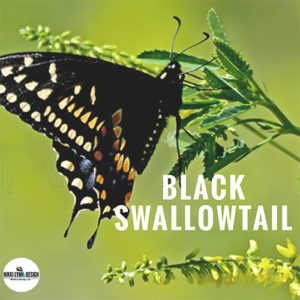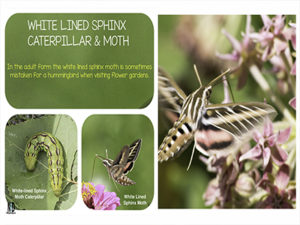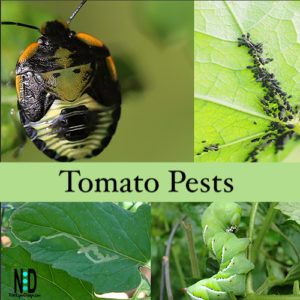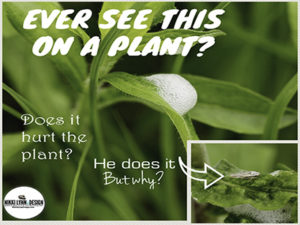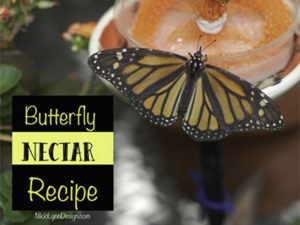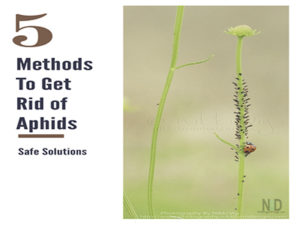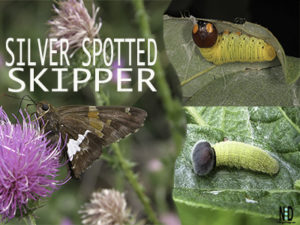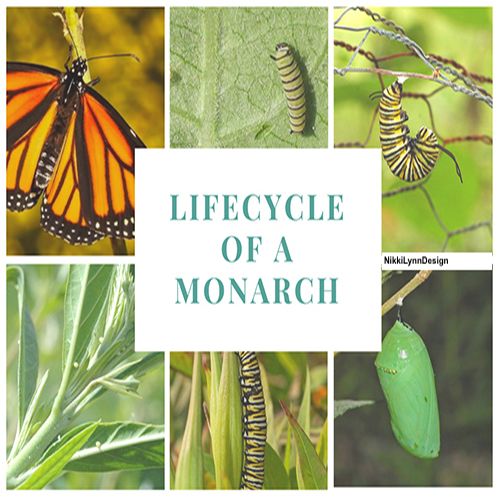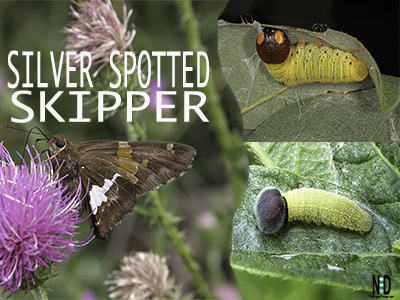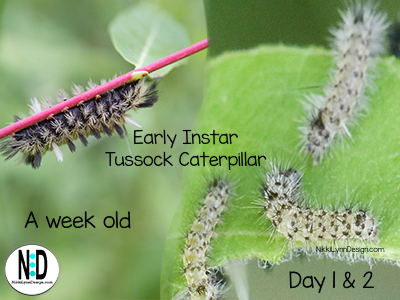Cabbage White Caterpillar and Butterfly
The cabbage white caterpillar and butterfly can wreak havoc on your cabbage and mustard family crops. The butterfly lays the eggs on your plants. The caterpillars eat your leaves and can bore inside.
Life Cycle of Cabbage White Caterpillar and Butterfly
One of the best-known garden insects and worst pests of cabbage is the common cabbage worm whose parent is the white butterfly. The butterflies are observed hovering over cabbage and cauliflower all through the summer.
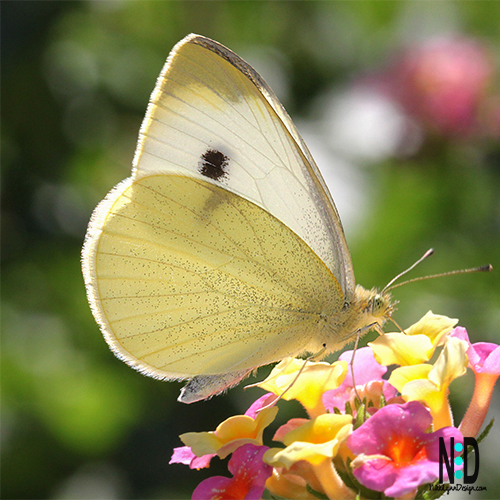
Small yellow eggs are laid on foliage and hatch in 4-8 days. The velvety green worms grow very rapidly, eating large, irregular holes in the leaves of the plants. The pupae overwinter on old cabbage stumps and rubbish in fields.
What The Cabbage White Butterfly Looks Like
The butterfly can be distinguished by its white or creamy white coloring and small black dots on its wings.
The wings of Pieris rapce are a dirty white above, tinged with yellowish in the female. The base and apex of the forewings are blackish and the female has two black dots on the forewings; the male has one. There is a black spot on the anterior margin of the hind wing. In the male it is indistinct.
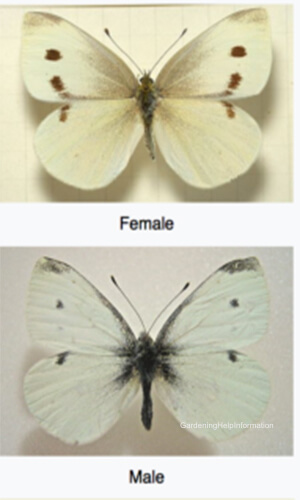
The wings of the butterfly expand about two inches; they are white, but dusky near the body, and the tips of the upper ones are yellowish beneath, with dusky veins. The underside of the hind wings is straw-colored, with broad dusky veins, and the angles next to the body are a deep yellow; the back is black, and the antennae are blackish, with narrow white rings, and ocher-yellow at the tips.
By itself, the cabbage white butterfly is not a pest.
It doesn’t eat or damage your plants, it feeds on nectar. The issue is the butterfly comes into the garden and looks for fresh, hearty leaves to lay its eggs on.
As the eggs mature, they become caterpillars that eat all your leaves.
Watch Where The Butterfly Lands In Your Yard
If you see the butterfly landing in your yard, be on the lookout for where it is landing. Check for eggs and remove them from your plants to protect them from a caterpillar infestation.
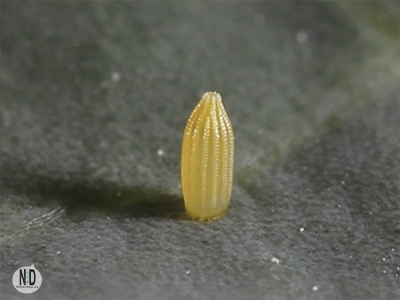
Normally, the butterfly will drop one, yellowish, pear-shaped, longitudinal-ribbed eggs are laid on the underside of the leaves, seldom over three on a single leaf, and are about a fifteenth of an inch in length.
There is an early summer (May) and a late summer (July) brood.
Cabbage White Caterpillar
The caterpillar is pale green, shaded slightly with yellow on each side; it tapers very little at both ends and is covered with short down. Besides Cabbages, this caterpillar consumes various other cruciferous plants.
The caterpillars hatch from eggs and start eating all the leaves on your plants. Creating holes everywhere and at times, entire plants.

The caterpillars change their coats three or more times. When they have completed the feeding stage, they quit the plants and retire beneath palings, or the edges of stones, where they spin a little tuft of silk, entangle the hooks of their hindmost feet in it, and then form a loop or girdle to sustain the body in a vertical or horizontal position.
Bending its body to one side, the caterpillar fastens to the surface, beneath the middle of its body, a silken thread, which it carries around its back and secures on the other side, and repeats this operation until the united threads have formed a band or loop of sufficient strength.
On the next day it casts off the caterpillar skin and becomes a chrysalis or pupa. This is of a pale green or whitish color, regularly and finely spotted with black.
The larva is pale green, finely dotted with black, with a yellowish stripe down the back, and a row of yellowish spots along each side in a line with the breathing holes.
Some Plants The Caterpillar Enjoys
| Cauliflower | Brussel Sprouts |
| Cabbage | Similar Green Leafy Veggies |
| Kale | Nasturtiums |
| Garden Cress | London Rocket Flixweed |
| Bok Choy | Garlic Mustard |
| Broccoli | Whitetop |
Additional Reads
Growing Weeks Needed For Fall Crops
Feeding & Attracting Butterflies
Butterfly Nectar Recipe
If You Had Issues In Past Years With Caterpillars
1.) Cover young plants with mosquito netting, held up off the leaves by sticks, usually, four of them, set in the ground, and a piece of netting pinned on. This is done in various ways, according to the tact of the person doing it, and, when properly done, prevents the eggs from being laid upon the leaves. These costs, besides the labor, are minimal for each plant.
2.) Picking the eggs is the next method. They can be easily found, and, if attended to, they may all be destroyed. Children can easily do this and are usually led to do it with the promise of a small reward for any certain number found.
3.) Have chickens? Set them loose in your garden, and they will pick off most of the worms, as they are considered by fowls as a sweet morsel and very desirable.
4.) Look for the pupa below if the caterpillars have been there for some time. The caterpillars will go through several growth stages and then form a chrysalis to become the butterfly. This happens extremely quickly, 18 to 20 days to be exact.
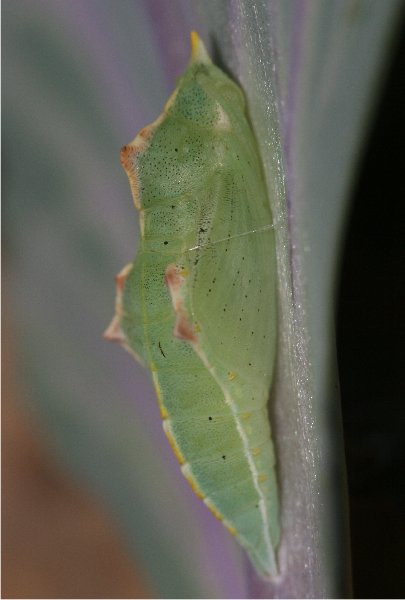
Additional Reads:
Growing Broccoli From Seed
Tomato Watering Tips
Composting With Worms
10 Wildflowers That Attract Birds
Now You Know The Importance of Being Able To ID These Insects
Being able to identify the butterfly will allow you to see if the insect is visiting your plants. Chances are that if the butterfly has visited your garden plants you now must search for eggs she may have left.
If the eggs are left to hatch, you can lose entire crops to hungry caterpillars. Once you have the caterpillars, you will need to rid your garden of them quickly.
Sharing Is Caring. Pin Me
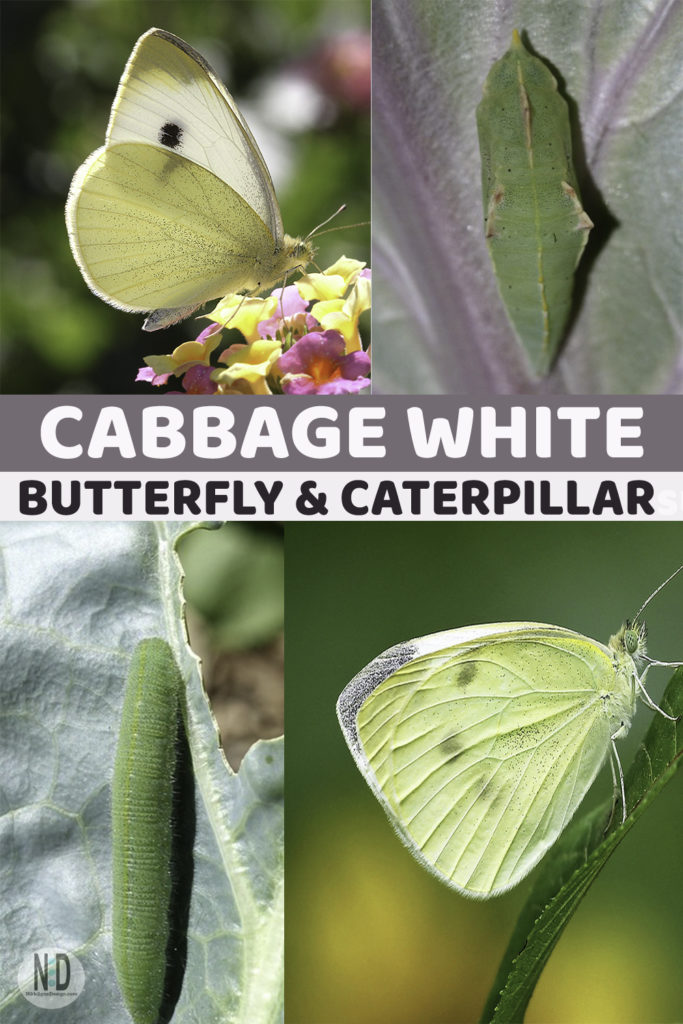
Additional Posts
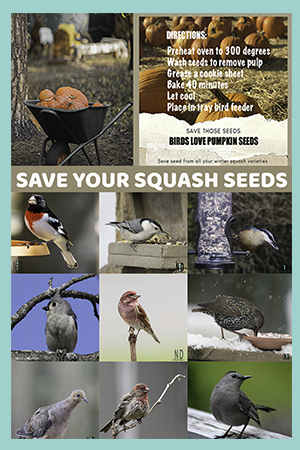
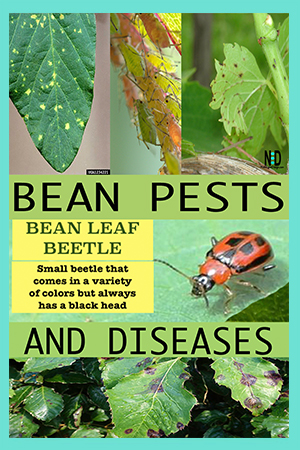
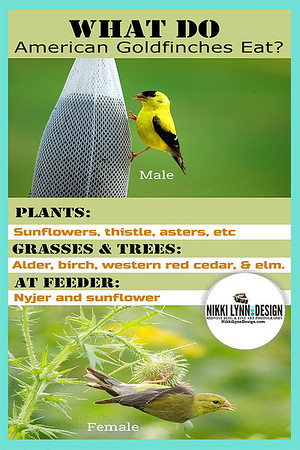
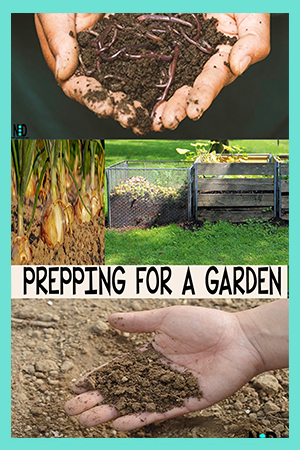
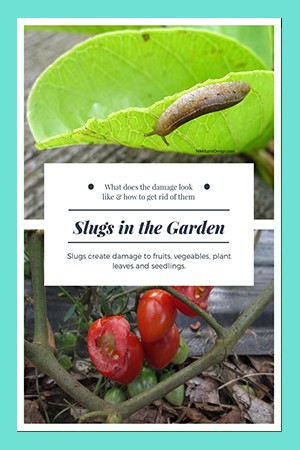

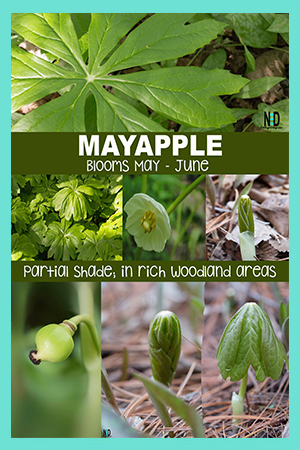
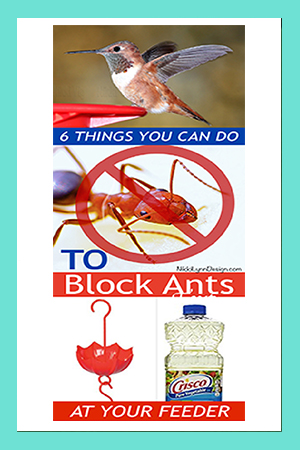
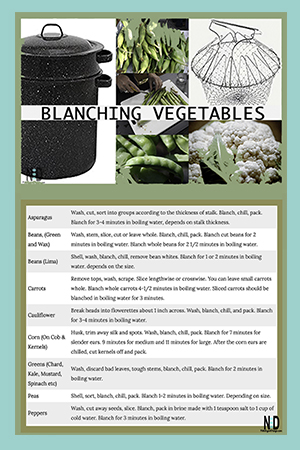
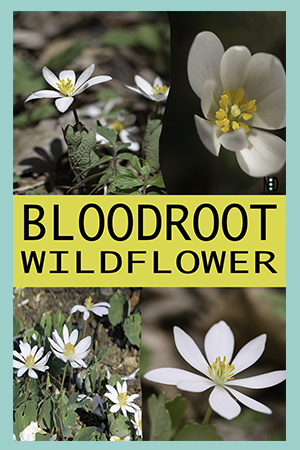
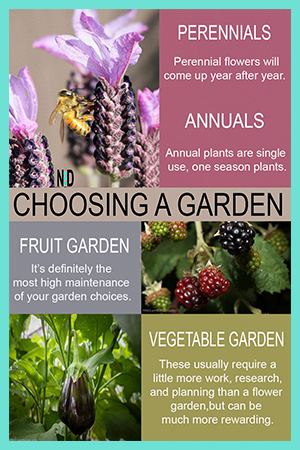

AFFILIATE POLICY: Posts on this site may contain links to outside vendors that pay me a commission when you purchase from them, at no additional cost to you. Thank you for supporting this site!
Photo credit in one of the pictures. Photo credit for egg photo.
